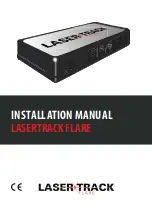
yellow
blue
4-11
The traction you can get in a curve depends on the
condition of your tires and the road surface, the angle at
which the curve is banked, and your speed. While you’re
in a curve, speed is the one factor you can control.
Suppose you’re steering through a sharp curve.
Then you suddenly apply the brakes. Both control
systems
--
steering and braking
--
have to do their
work where the tires meet the road. Unless you have
four
-
wheel anti
-
lock brakes, adding the hard braking
can demand too much of those places. You can
lose control.
The same thing can happen if you’re steering through a
sharp curve and you suddenly accelerate. Those two
control systems
--
steering and acceleration
--
can
overwhelm those places where the tires meet the road
and make you lose control.
What should you do if this ever happens? Ease up on the
brake or accelerator pedal, steer the vehicle the way you
want it to go, and slow down.
Speed limit signs near curves warn that you should
adjust your speed. Of course, the posted speeds are
based on good weather and road conditions. Under less
favorable conditions you’ll want to go slower.
If you need to reduce your speed as you approach a
curve, do it before you enter the curve, while your front
wheels are straight ahead.
This is especially important with a tractor
-
trailer. Try to
adjust your speed so you can “drive” through the curve.
Maintain a reasonable, steady speed. Wait to accelerate
until you are out of the curve, and then accelerate gently
into the straightaway.
Steering in Emergencies
There are times when steering can be more effective than
braking. For example, you come over a hill and find a
truck stopped in your lane, or a car suddenly pulls out
from nowhere, or a child darts out from between parked
cars and stops right in front of you. You can avoid these
problems by braking
--
if you can stop in time. But
sometimes you can’t; there isn’t room. That’s the time for
evasive action
--
steering around the problem.
In emergencies like these, first apply your brakes
--
but
unless you have anti
-
lock, not enough to lock your
wheels. (See “Braking in Emergencies” earlier in this
section.) It is better to remove as much speed as you
can from a possible collision. Then steer around the
problem, to the left or right depending on the space
available. If your vehicle has anti
-
lock brakes, you don’t
need to release the brakes to maintain steering control.
Содержание T-Series 1999
Страница 28: ...yellowblue 1 22...
Страница 84: ...yellowblue 2 48 Instrument Panel...
Страница 115: ...yellowblue 3 13 NOTES...
Страница 116: ...yellowblue 3 14 NOTES...
Страница 148: ...yellowblue 4 32 NOTES...
Страница 184: ...yellowblue 5 36 NOTES...
Страница 185: ...yellowblue 5 37 NOTES...
Страница 186: ...yellowblue 5 38 NOTES...
Страница 262: ...yellowblue 6 76 NOTES...
Страница 324: ...yellowblue 7 62 Maintenance Record DATE ODOMETER READING SERVICED BY MAINTENANCE PERFORMED...
Страница 334: ...yellowblue 8 10 NOTES...
















































